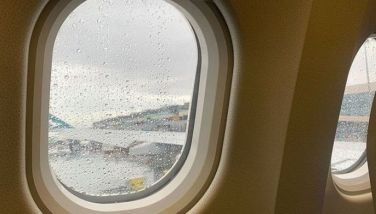WB urges E Asian nations to craft integrated trade strategy
June 22, 2003 | 12:00am
The World Bank is urging nations in the East Asian region to formulate an integrated regional trade strategy in order to realize significant growth in their respective gross domestic product (GDP).
Jemal-ud-din Kassum, WB vice president for East Asia and the Pacific Region, said that "economic integration is a growing force, and we want to make sure it is managed carefully so that its benefits can be broadly shared by poorer countries and the poor within countries."
Countries of East Asia face the triple challenge of maintaining income growth and poverty reduction in a competitive global economy, pursuing their recovery from the 1997 financial crisis, and adapting to China’s emergence as a major world and regional trader.
These challenges can be met if action is taken to promote economic cooperation through trade and investment liberalization, the World Bank’s latest research said. It further recommends an integrated regional trade strategy, with a greater emphasis on openness and equity than in the past.
Kassum emphasized the importance for countries to act now if they want to realize annual benefits expected to reach $300 billion or roughly 10 percent of the region’s GDP.
"If properly shared, this would mean over 50 million fewer poor (at $2 per day). But to get there, we must move from debate and academic discussions to the real world of negotiations and concrete policies," he added.
The study urges policymakers to broaden trade agreements to include services, adapting China’s approach to agricultural trade liberalization, and simplifying customs paperwork and border checkpoints, among a host of recommendations to smoothen trade flows and cut costs.
"The pursuit of a trade for development‚ strategy in East Asia is a must, but it will not be easy. Trade for development means moving beyond narrow business interests focused on protecting specific sub-sectors," said Homi Kharas, WB chief economist for East Asia and co-editor of the report.
"It involves economic change, at a time when policymakers are trying to manage major financial and corporate restructuring, repair overstretched social safety nets, respond to the challenges posed by China, listen to the greater plurality of voices and interest groups competing for political power, and adapt to sometimes vicious global economic cycles. And because stability is seen as a key to investor confidence and a return to high growth, it is not surprising that there is resistance to still further change," he added.
Change, however, is essential, Kharas stressed. While East Asia’s growing share of world exports - now at about 19 percent – has corresponded with improved welfare and poverty reduction, the link between trade and development outcomes has varied sharply over time and across the region.
"Mildly rising inequality within countries including China, Vietnam, and the Philippines, and also a widening income gap between richer economies such as Singapore and Hong Kong (China) and the poorest, Laos and Cambodia, is a growing concern to policymakers interested in a stable, prosperous region," he added.
Jemal-ud-din Kassum, WB vice president for East Asia and the Pacific Region, said that "economic integration is a growing force, and we want to make sure it is managed carefully so that its benefits can be broadly shared by poorer countries and the poor within countries."
Countries of East Asia face the triple challenge of maintaining income growth and poverty reduction in a competitive global economy, pursuing their recovery from the 1997 financial crisis, and adapting to China’s emergence as a major world and regional trader.
These challenges can be met if action is taken to promote economic cooperation through trade and investment liberalization, the World Bank’s latest research said. It further recommends an integrated regional trade strategy, with a greater emphasis on openness and equity than in the past.
Kassum emphasized the importance for countries to act now if they want to realize annual benefits expected to reach $300 billion or roughly 10 percent of the region’s GDP.
"If properly shared, this would mean over 50 million fewer poor (at $2 per day). But to get there, we must move from debate and academic discussions to the real world of negotiations and concrete policies," he added.
The study urges policymakers to broaden trade agreements to include services, adapting China’s approach to agricultural trade liberalization, and simplifying customs paperwork and border checkpoints, among a host of recommendations to smoothen trade flows and cut costs.
"The pursuit of a trade for development‚ strategy in East Asia is a must, but it will not be easy. Trade for development means moving beyond narrow business interests focused on protecting specific sub-sectors," said Homi Kharas, WB chief economist for East Asia and co-editor of the report.
"It involves economic change, at a time when policymakers are trying to manage major financial and corporate restructuring, repair overstretched social safety nets, respond to the challenges posed by China, listen to the greater plurality of voices and interest groups competing for political power, and adapt to sometimes vicious global economic cycles. And because stability is seen as a key to investor confidence and a return to high growth, it is not surprising that there is resistance to still further change," he added.
Change, however, is essential, Kharas stressed. While East Asia’s growing share of world exports - now at about 19 percent – has corresponded with improved welfare and poverty reduction, the link between trade and development outcomes has varied sharply over time and across the region.
"Mildly rising inequality within countries including China, Vietnam, and the Philippines, and also a widening income gap between richer economies such as Singapore and Hong Kong (China) and the poorest, Laos and Cambodia, is a growing concern to policymakers interested in a stable, prosperous region," he added.
BrandSpace Articles
<
>
- Latest
- Trending
Trending
Latest



























